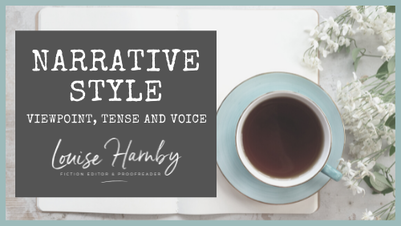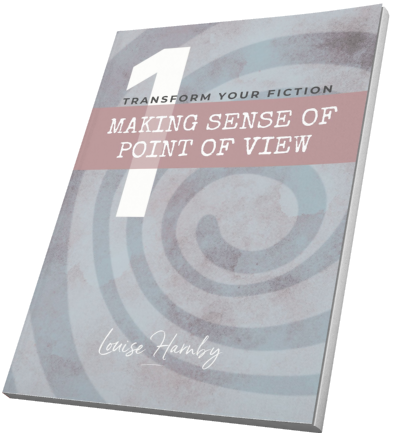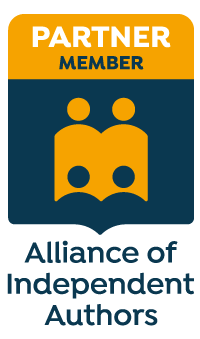Working on fiction? Every copyeditor and line editor should understand narrative style. Learn about it with me.
Hone your line craft by learning the foundations of narrative style
|
Understanding narrative style in a novel is an essential skill for any professional fiction editor.
This course introduces beginner and developing fiction editors to narrative viewpoint, tense and voice, and teaches you how whose perspective we experience a story through influences what can be reported. By the end of the course, you'll understand the following: > What narrative style is > The different narrative viewpoints in fiction > How tense affects narrative style > Distinctive narrative voice > The impact of narrative distance > What head-hopping looks like > Viewpoint characters, focal characters and protagonists > How to guide authors and demonstrate your expertise |
Edit and communicate with confidenceI'll teach you the foundations so you can identify problems, communicate the solutions, and guide your clients towards a better reader experience.
|
Check out the syllabus!
MODULE 1: What is narrative style?
- What the term 'narrative style' means
- The components editors need to be aware of: Viewpoint, tense and voice
- What a narrator is and how many there can be
- What form a narrator can take
- Where a narrator sits in relation to the story
- Exercises and model answers
MODULE 2: The different narrative viewpoints
- What viewpoint is
- How many narrative viewpoints can exist in a novel
- The difference between a viewpoint character and a non-viewpoint character
- The most common types of viewpoint in fiction
- The opportunities each viewpoint style offers
- The restrictions each viewpoint style imposes
- How choice of viewpoint affects intimacy and immediacy
- Why overuse of pronouns can be problematic, and how to fix it
- Neopronouns: The impact of identity on viewpoint
- Tools to increase or reduce intimacy and immediacy
- Exercises and model answers
MODULE 3: How tense affects narrative style
- The different tenses an author can use in a novel
- The most common tenses used
- Which tense a novel's 'now' can be written in
- Which tenses are used to convey a novel's past
- Other useful tenses
- How tense can influence intimacy and immediacy
- Ideas for fixing problems with tense
- Exercises and model answers
MODULE 4: Distinct narrative voice
- What narrative voice is
- How voice helps readers understand the narrator better
- How narrative voice can be communicated to a reader
- The difference between overworked and compelling voices
- Common problems with voice and how to fix them
- Why editors need to be cautious about editing unfamiliar vernacular
- Exercises and model answers
MODULE 5: Narrative distance
- What narrative distance is
- What else it's called
- How viewpoint, tense and voice relate to distance
- How a continuum framework helps editors to visualize distance
- How distance can shift even within a single viewpoint
- Problems with narrative distance: too quick, too far and head-hopping
- Tools to help you fix problems with distance
- Exercises and model answers
MODULE 6: What head-hopping looks like
- How head-hopping is defined
- What else it's called
- Why head-hopping is a problem for readers
- The difference between head-hopping and an omniscient viewpoint
- How to fix problems with head-hopping
- Exercises and model answers
MODULE 7: Viewpoint characters, focal characters and protagonists
- What the terms ‘viewpoint character’, ‘focal character’ and ‘protagonist’ mean
- Which characters hold these roles
- What a viewpoint character can access and report
- What a non-viewpoint character can report
- What an omniscient narrator can report
- How many viewpoint characters a novel can have
- Alternating-person narratives, and good practice for managing them
- Exercises and model answers
MODULE 8: Educating authors about narrative style
- Why educating about narrative style serves authors, readers and editors
- The kind of content you might create
- How to start with written content – a blog post
- Why creating resources builds trust
- How content can be repurposed for marketing, trust-building, income generation and CPD
- Why resource creation can lead organically to getting editing work
- Exercises and model answers
Course access
How do I pay?
- When the course goes live, I'll email you the link to my store.
- You can pay via PayPal or Stripe.
Are there any goodies?
How long can I access the course for?
For as long as you want! All my courses come with lifetime access so you can learn when it suits you, not me.
How will I access the course?
As soon as you've purchased the course, you'll be invited to create a login for my learning portal. That will give you immediate and continuing access to the course materials 24/7.
Is this course right for me?
This course is a good fit for anyone who's confused about narrative style or doesn't understand what it is or why it's relevant to the success of a novel. The following people will get the most from it:
Experienced fiction editors will likely already know the topic inside out. Unless you're in need of a foundational brush-up, this course isn't a good fit for you.
- Experienced non-fiction editors who want to switch to fiction
- Fiction proofreaders who want to expand their skill set and move into editing
- Fiction copyeditors with strong technical skills who want to develop stylistic craft
Experienced fiction editors will likely already know the topic inside out. Unless you're in need of a foundational brush-up, this course isn't a good fit for you.
Does the course come with CIEP membership upgrade points?
If you're ready to upgrade your CIEP membership, the following courses count towards total training/CPD upgrade points.
- Style Sheets for Fiction Editing: 3 non-core skills points
- Switching to Fiction: 2 non-core skills points
- How to Line Edit for Suspense: 2 non-core skills points
- How to Write the Perfect Fiction Editorial Report: 2 non-core skills points
- Narrative Distance: 1 non-core skills point
- Branding for Business Growth: 1 non-core skills point
- Blogging for Business Growth: 1 non-core skills point
- Social Media for Business Growth: 1 non-core skills point
|
|
|
© 2011–2024 Louise Harnby










